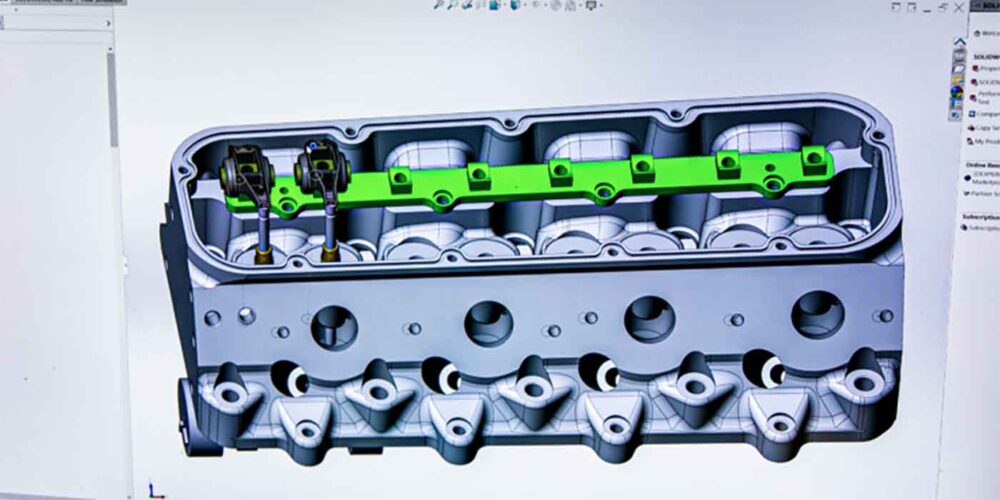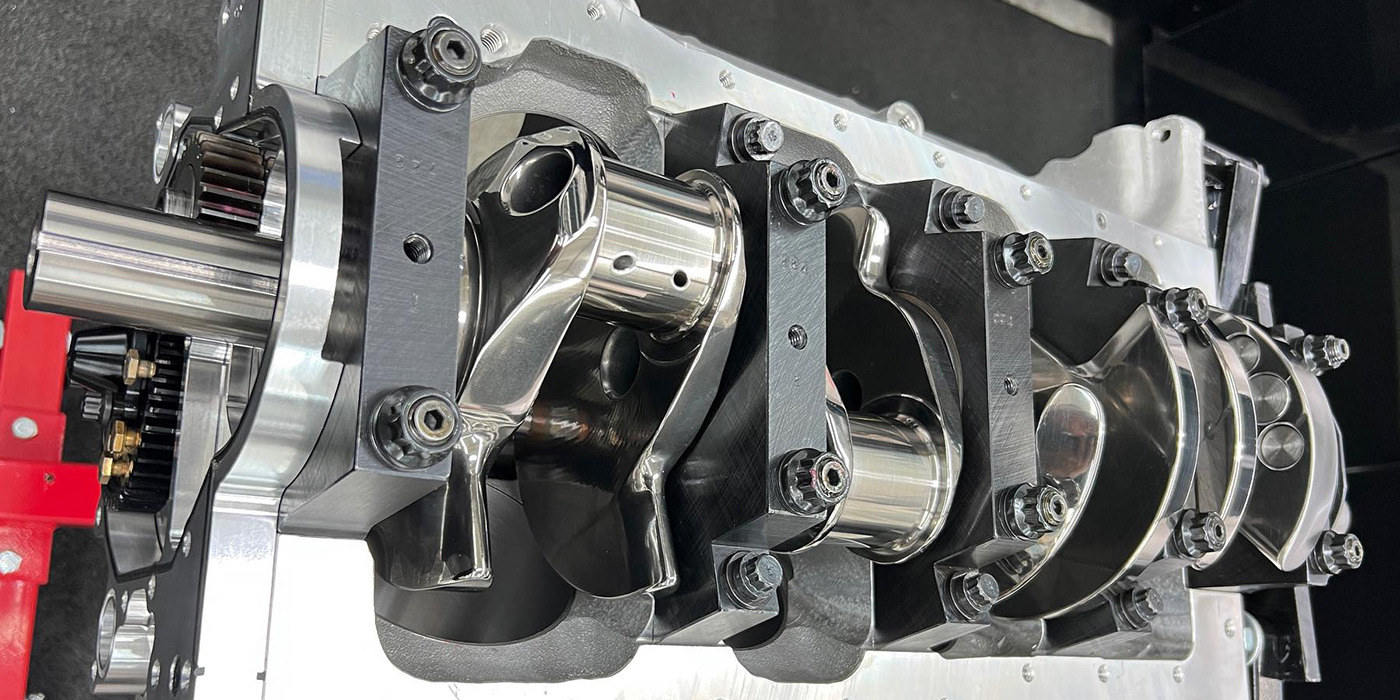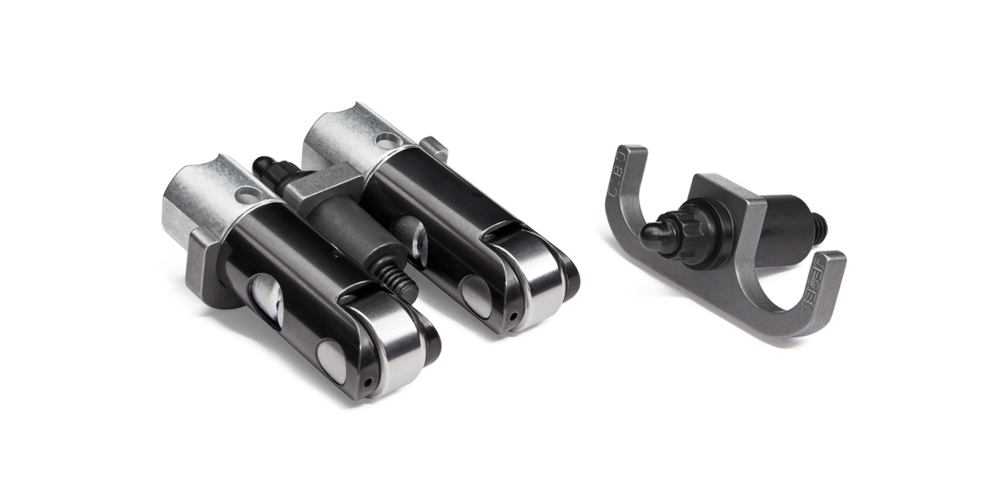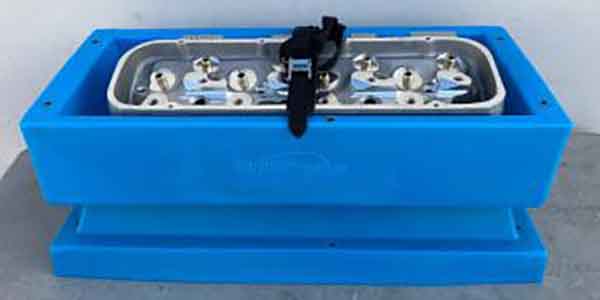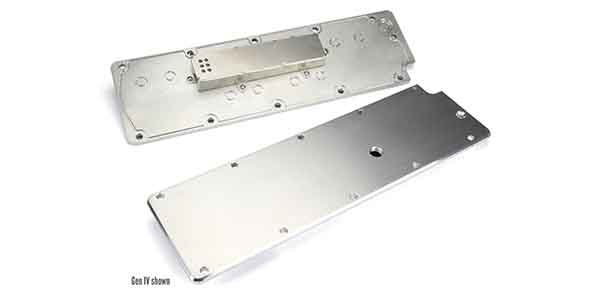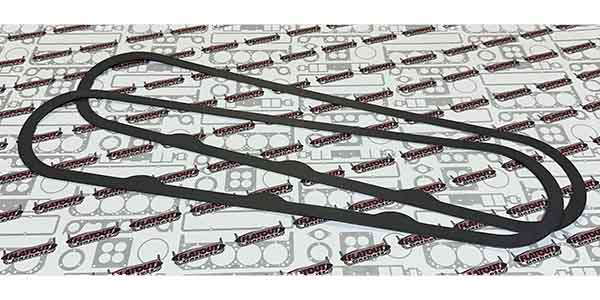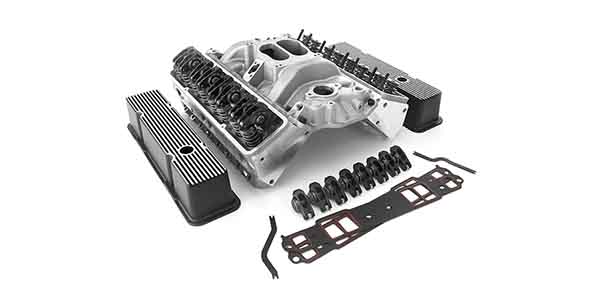When Frankenstein put in the effort to develop its F-series high-performance cylinder heads, they determined an improved LS casting could deliver two things – more efficiency from reduced port turbulence and a zen-like valvetrain that stays calm in extreme conditions. In order to accomplish that, everything had to change, so it did.
Development began in 2016 when Chris Frank, Brad Hall and Jesse Meagher agreed there was much more power potential for LS racing engines, but existing castings had limitations. It was time for Frankenstein to design its own casting, with raised runners, 10-degree and 15-degree valve angle options and a valvetrain that could handle 10,000 rpm.
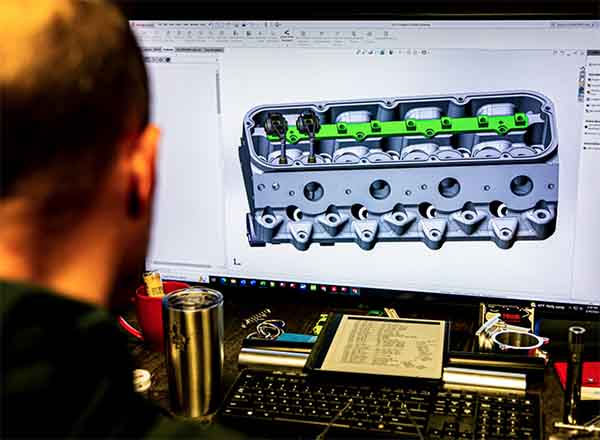
The F-series head debuted at PRI in 2018. Right away, engine builders knew it was special. A new raised runner cylinder head with features never seen before. But, the industry didn’t buzz about it until later, when inexplicable dyno results started appearing. Then, people wanted to know what was put into it.
The geometry of OEM LS castings have some limitations, but the platform has exceptional power potential. To make high performance a reality, Frankenstein knew the castings had to change completely.
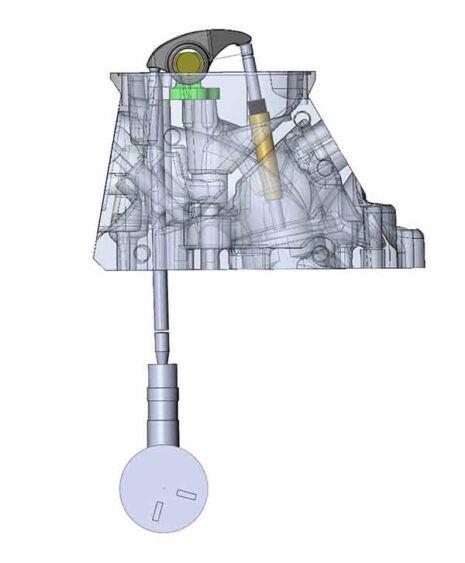
Starting with a clean slate has advantages. However, maintaining accessibility without compromising performance is a delicate balance. Frankenstein approached the F-series design systemically with focus on each component. This strategy sought to optimize the collective performance of the system to gain rewards measured in horsepower, not flow numbers. In fact, cfm wasn’t, and never is, Frankenstein’s sole performance objective.
Flow bench cfm is still helpful, but it’s just a static measurement of airflow through a cylinder head. The reality is more bench airflow does not necessarily mean more horsepower. Today’s advanced porting methods incorporate the entire induction system to achieve maximum air speed, pressure recovery and combustion efficiency. Frankenstein designed the F-series using Reactive Airflow Modeling, a proprietary approach to engineering peak performance in context of the whole induction system for its intended engine application.
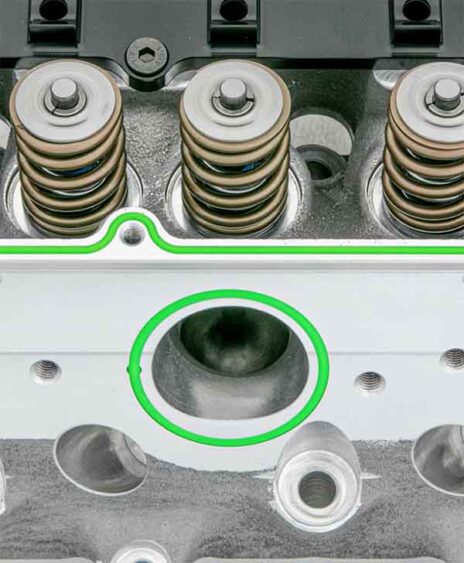
Optimal cylinder head designs emerge from advanced methods which incorporate the dynamics of air and fuel, turbulence, velocity, pressure, recovery, and density occurring throughout the combustion process. Frankenstein knew how to breathe life into the LS, but it needed a lot more than a new port shape to reach maximum potential.
The company engineered the F-series to run at such extreme levels that it pushed the boundaries of aftermarket components, so Frankenstein shared its prototypes and performance goals and visited its partners in the aftermarket such as PAC and Jesel. They in turn stepped up and engineered new components compatible with the F-series’ performance capabilities. Now confident the F-series could have a solid valvetrain, Frankenstein unleashed engineering to make its castings with the extreme airflow capabilities it envisioned.
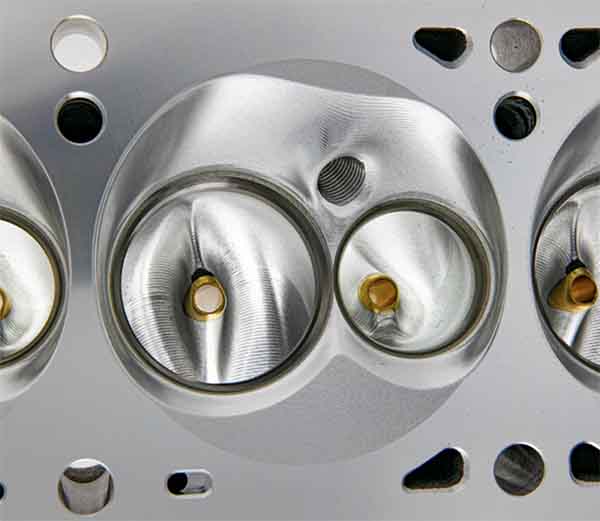
First order of business was to exploit the raised runner design by raising the intake .250″ and raising the exhaust .200″. This substantial increase provides a more direct pathway for air, but there was still room for improvement. Repositioning the valve locations and moving the pushrod caused a hump along the intake wall. Repositioning the pushrod effectively reduced interference and opened the airpath further and served the dual purpose of improving alignment between the pushrod and rockers. The F-series exhaust ports were placed on center-line with the exhaust exit to improve spent hydrocarbon purging, and the spark plug was centered in the chamber for cleaner burn and maximum combustion efficiency. For practical purposes, the intake flange was extended to remain compatible with most OEM and aftermarket intakes.
Altogether, the flow characteristics exceeded expectations and set new benchmarks in the industry. The F-series enables higher rpm ceiling while achieving peak torque earlier, and the increased volumetric efficiency requires less timing to achieve peak power and optimal tuning.
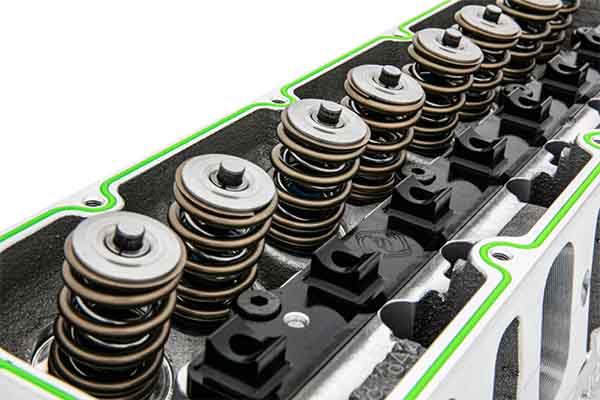
Of course, forces acting on the valvetrain cause components to deflect and compress, which will steal lift and duration, leaving horsepower on the table. For those reasons, the valvetrain geometry was critical to support the capabilities of the F-series. It was designed for high-performance valvetrain components to transfer energy efficiently resulting in superior stability and durability. To this end, Frankenstein aligned the pushrods and rocker assembly to mitigate pushrod deflection. Frankenstein developed triangulated and doweled 6061-T651 billet rocker stands, which improves system rigidity under high-rpm/high-stress applications when using stock-style OEM or aftermarket rockers.
The F-series head can also accommodate up to 1/2″ pushrods and it needs a rocker assembly to endure spring pressures of aggressive cam profiles. During the development phase, Jesel evaluated cylinder head prototypes and new steel billet rocker stands. The Jesel engineering team designed a custom shaft-mount rocker assembly with 1.80/1.80 ratio, and options for 2.0. The F-series shaft rockers are a solid body 2024 aluminum construction, which resists fatigue, stress and heat. The rockers are lighter weight and provide superior rigidity, which is ideal for the high cylinder pressures of the F-series. Jesel also mimicked the LS7 cup depth for close-to-stock preload and included a cup adjuster common with Jesel rockers.
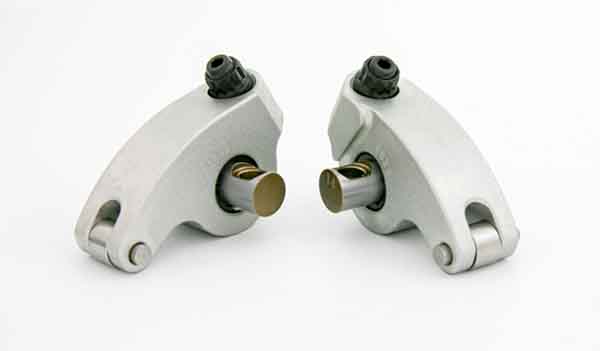
Frankenstein also partnered with PAC to develop a custom 0.700 lift dual spring kit to endure higher rocker ratios, reduce loft and minimize oscillation in extreme conditions. Custom valves, guides and titanium retainers were also added for durability and increased longevity.
Cooling efficiency is engineered into the F-series. The head’s -6 ORB water cross over ports provide optimal cooling capacity to ensure equalized temperatures between cylinders for precise and reliable tuning. The enhanced deck structure is comprised of a custom A356 aluminum for increased durability and to reduce the effects of heat sink. Finally, a high efficiency water jacket was added, designed using CAD and CFD modeling, to provide exceptional cooling capacity.
To put the cherry on top as development came to an end, Frankenstein partnered with EFI University to spintron test the F-series. Analysis revealed one of the most stable LS valvetrains ever recorded by EFI U at 10,000 rpm.

